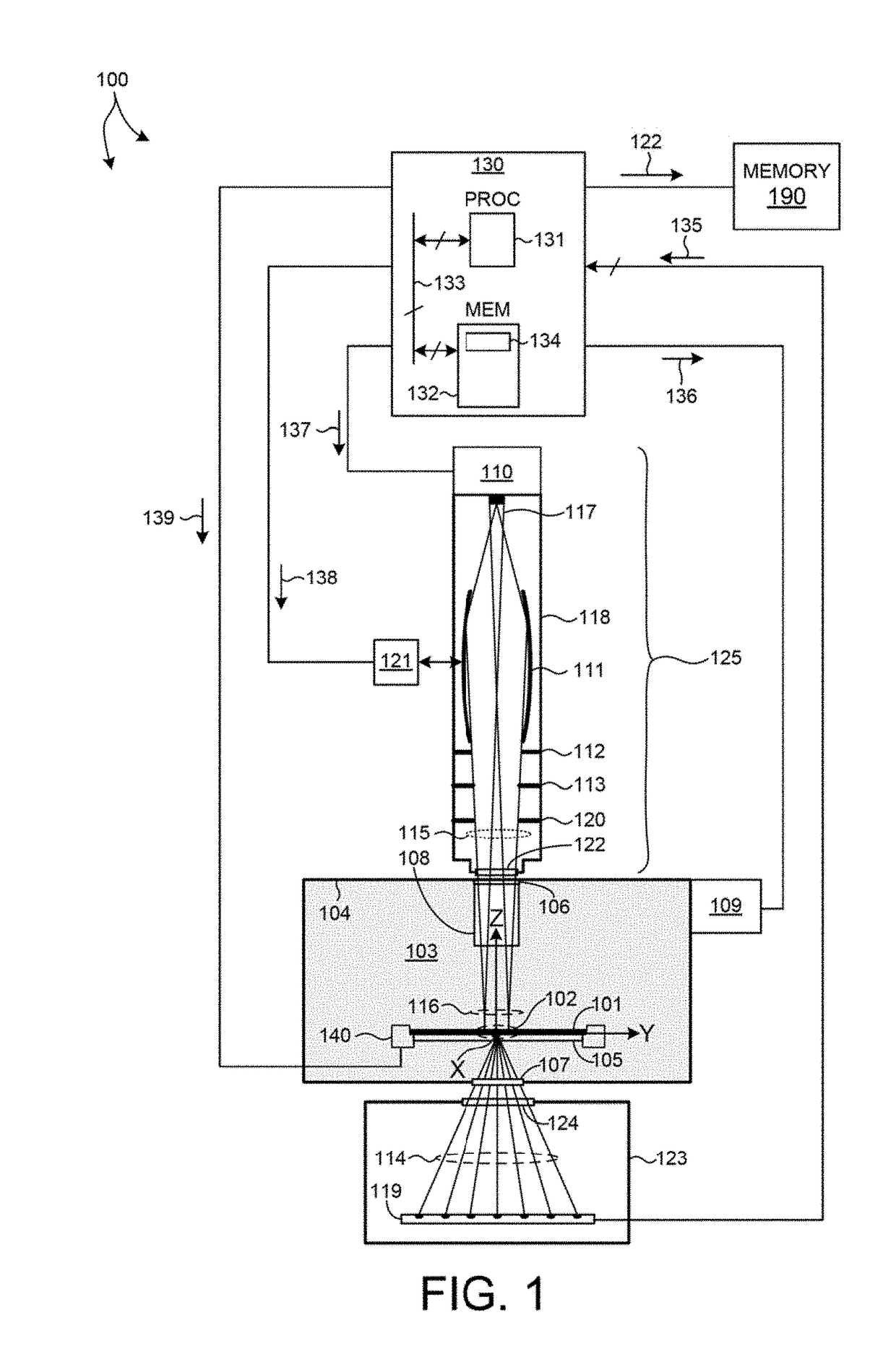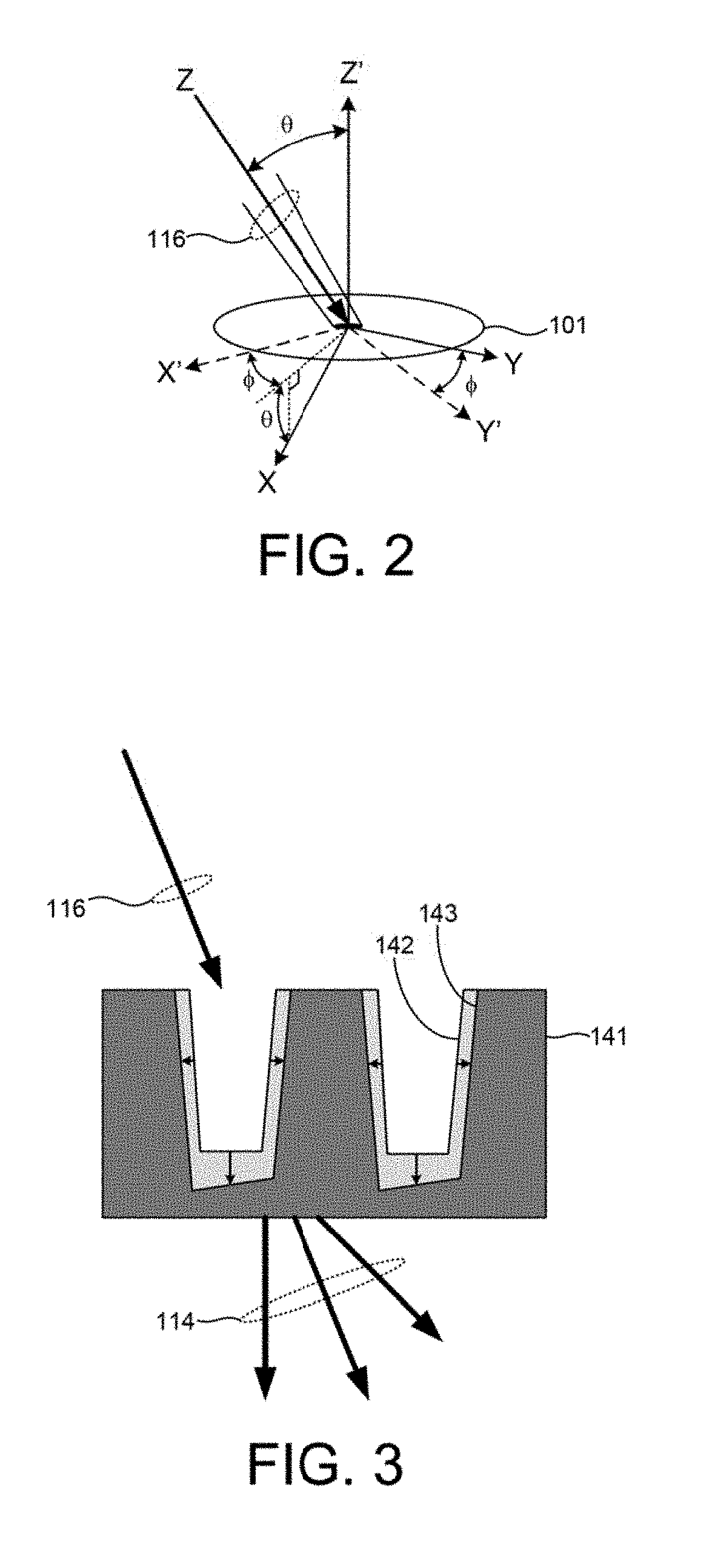Process Monitoring Of Deep Structures With X-Ray Scatterometry
a deep structure and process monitoring technology, applied in the field of metalrology systems and methods, can solve the problems of difficult optical radiation penetration to the bottom layer, difficult characterization, and increased measurement difficulty, and achieve the effect of greater precision and certainty of measured parameters and length of measurement tim
- Summary
- Abstract
- Description
- Claims
- Application Information
AI Technical Summary
Benefits of technology
Problems solved by technology
Method used
Image
Examples
Embodiment Construction
[0043]Reference will now be made in detail to background examples and some embodiments of the invention, examples of which are illustrated in the accompanying drawings.
[0044]Methods and systems for estimating values of process parameters, structural parameters, or both, based on x-ray scatterometry measurements of partially fabricated, high aspect ratio semiconductor structures are presented herein. X-ray scatterometry measurements of high aspect ratio structures are performed at one or more steps of a fabrication process flow. Exemplary process steps include etch, deposition, and lithography processes. The measurements are performed quickly and with sufficient accuracy to enable yield improvement of an on-going semiconductor fabrication process flow. In some examples, measurements performed while the wafer is being processed are used to control the on-going process. High aspect ratio structures include sufficient overall scattering volume and material contrast to efficiently scatte...
PUM
| Property | Measurement | Unit |
|---|---|---|
| roughness | aaaaa | aaaaa |
| wavelengths | aaaaa | aaaaa |
| wavelengths | aaaaa | aaaaa |
Abstract
Description
Claims
Application Information
 Login to View More
Login to View More - R&D
- Intellectual Property
- Life Sciences
- Materials
- Tech Scout
- Unparalleled Data Quality
- Higher Quality Content
- 60% Fewer Hallucinations
Browse by: Latest US Patents, China's latest patents, Technical Efficacy Thesaurus, Application Domain, Technology Topic, Popular Technical Reports.
© 2025 PatSnap. All rights reserved.Legal|Privacy policy|Modern Slavery Act Transparency Statement|Sitemap|About US| Contact US: help@patsnap.com



